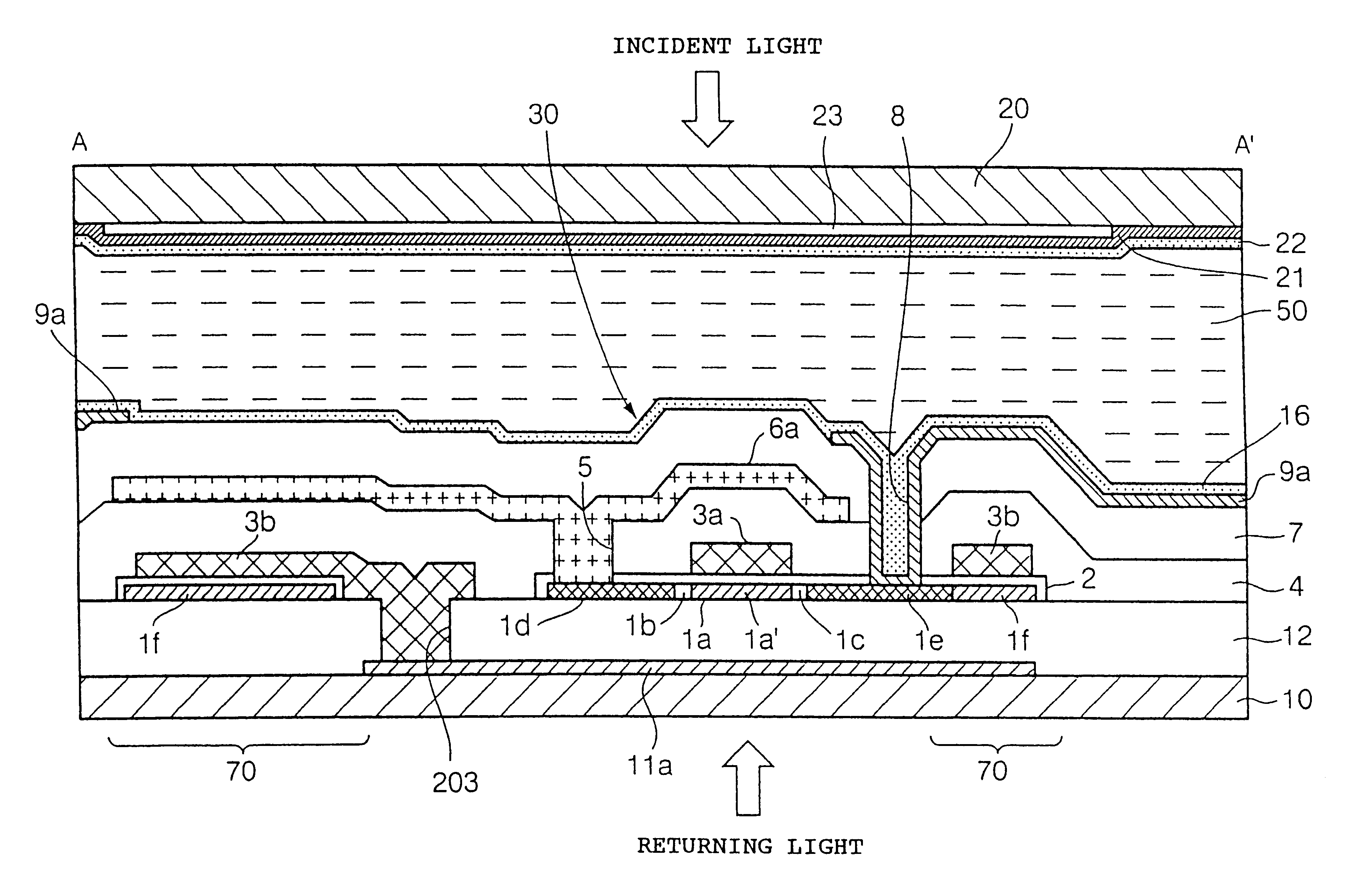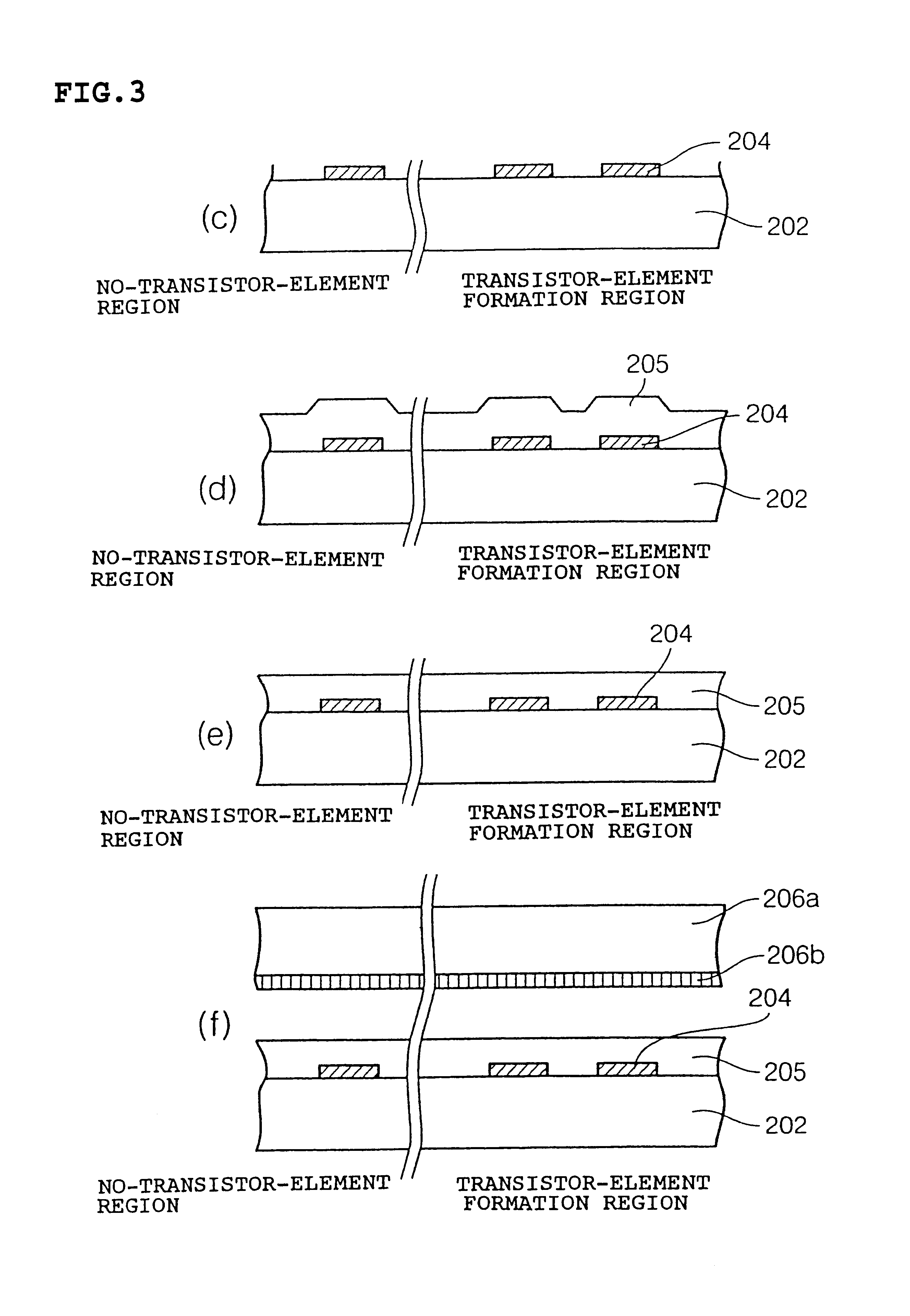Method for manufacturing electro-optical device, electro-optical device, and electronic equipment
a manufacturing method and technology for optical devices, applied in the direction of radiation controlled devices, identification means, instruments, etc., can solve the problems of affecting the performance of optical devices, degrading the characteristics of optical devices, and affecting the quality of optical devices
- Summary
- Abstract
- Description
- Claims
- Application Information
AI Technical Summary
Benefits of technology
Problems solved by technology
Method used
Image
Examples
Embodiment Construction
The embodiments of the present invention are now discussed, referring to the drawings.
(Basic Construction of the Electro-optical Device)
FIG. 1 is a cross-sectional view showing the basic construction of the electro-optical device of a first embodiment of the present invention.
Referring to FIG. 1, an electro-optical device 201 includes a light shielding layer 204 formed on a light transmissive substrate (transparent substrate) 202. An insulating layer 205 and a monocrystalline silicon layer 206 are successively formed on the light transmissive substrate 202. A transistor element formation region (not shown) is formed in the monocrystalline silicon layer 206 in a position corresponding to the light shielding layer 204.
(Manufacturing Process)
The manufacturing process of the above electro-optical device is now discussed, referring to FIG. 2 step (2) through FIG. 4 step (g)
Referring to FIG. 2 step (2), the light shielding layer 204 is formed on the entire top surface of the transparent l...
PUM
| Property | Measurement | Unit |
|---|---|---|
| thickness | aaaaa | aaaaa |
| thickness | aaaaa | aaaaa |
| thickness | aaaaa | aaaaa |
Abstract
Description
Claims
Application Information
 Login to View More
Login to View More - R&D
- Intellectual Property
- Life Sciences
- Materials
- Tech Scout
- Unparalleled Data Quality
- Higher Quality Content
- 60% Fewer Hallucinations
Browse by: Latest US Patents, China's latest patents, Technical Efficacy Thesaurus, Application Domain, Technology Topic, Popular Technical Reports.
© 2025 PatSnap. All rights reserved.Legal|Privacy policy|Modern Slavery Act Transparency Statement|Sitemap|About US| Contact US: help@patsnap.com



